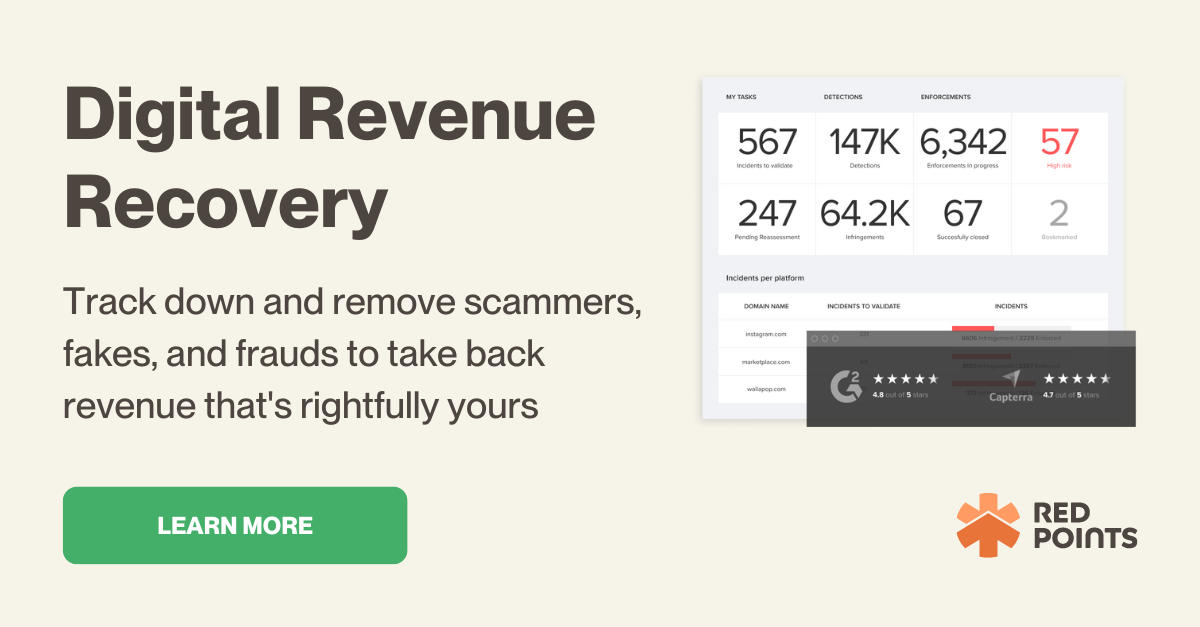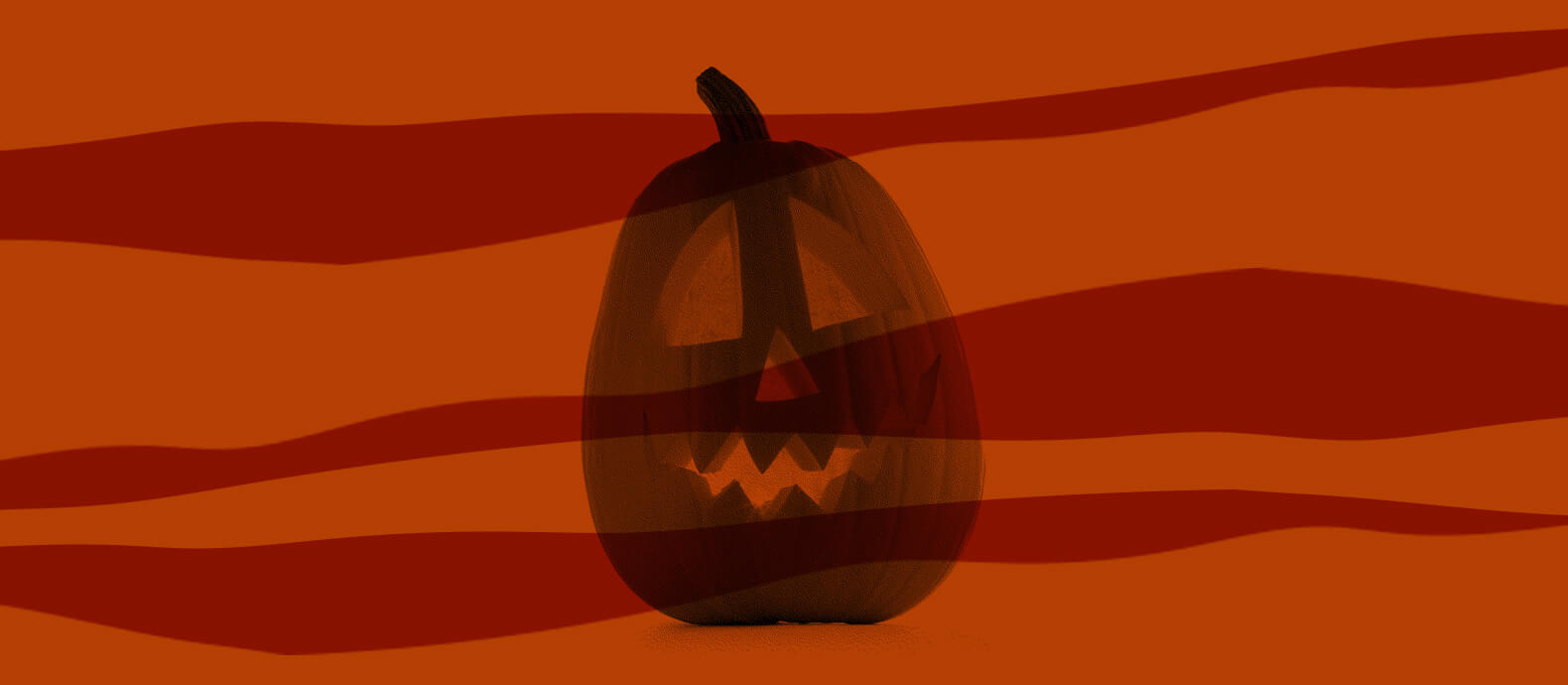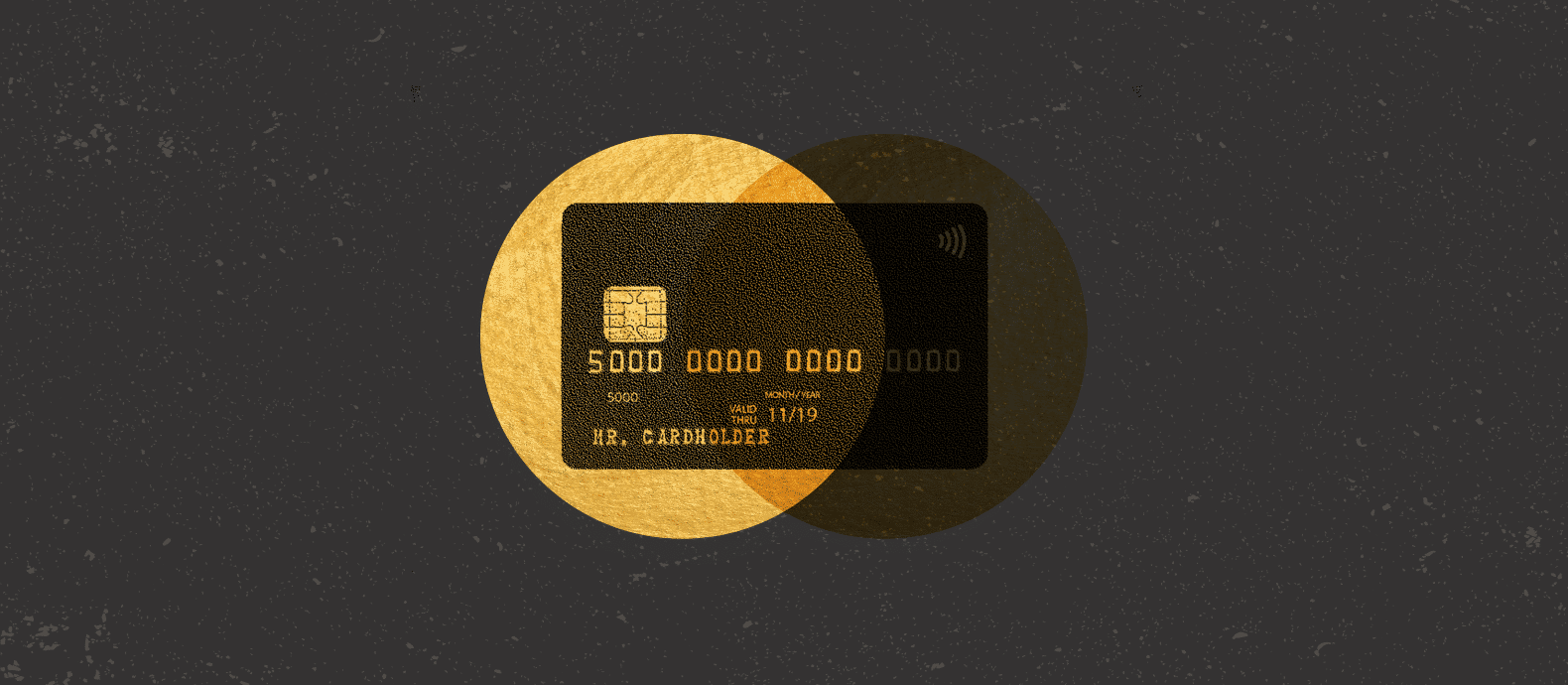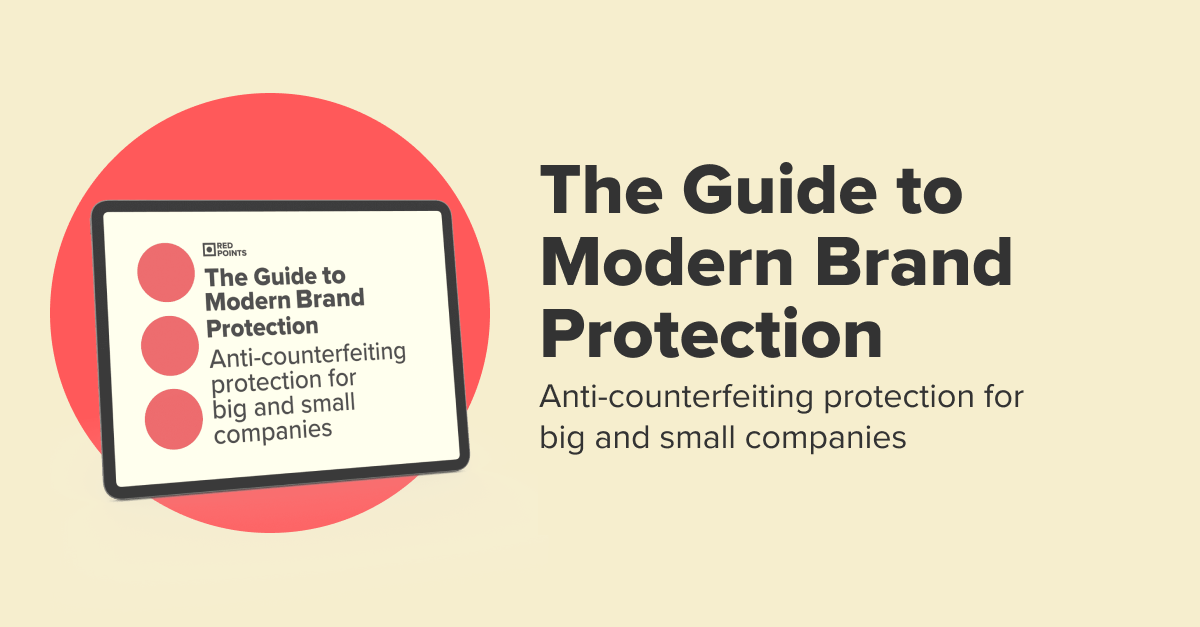Discover how to boost your online sales and avoid e-commerce scams during key dates in 2023
Holidays are a huge opportunity for online businesses to increase their sales and brand awareness. They also, however, pose some challenges – particularly in light of rising inflation and an ongoing cost-of-living crisis.
The e-commerce industry boomed during the pandemic, and it’s an upward trend that’s here to stay. That’s great news for all online retailers, although businesses will have to be extra careful about the parallel growth of gray markets, counterfeits, and online scams.
In this article, Red Points looks at key dates for the latter half of the 2023 ecommerce sales season. You can find practical tips on how to increase your sales for each holiday as well as download our detailed guide on how to protect your brand during peak sales periods.
Back to school (August-September)
Remember the excitement of buying new stationery, clothes, and shoes before your new school year began? Or perhaps it was dread, and not excitement. Either way, if your brand sells stationery products or apparel, this is a good time to spotlight all school-related items on your website.
With a cost-of-living crisis on our hands and rising inflation around the world, pricing will be a key driver behind back-to-school purchase decisions this year, according to Medium. So brands may find success by ramping up discounts in order to entice price-savvy customers.
It will be particularly important this year to safeguard your brand against counterfeits. Since consumers will be looking closely at price tags, they may be tempted to buy a fake over the real thing. Our survey revealed that 40% of shoppers believe it is the brand’s responsibility to address counterfeit products in the market, so it is crucial that you take action before counterfeits start to negatively affect your brand.
Halloween (October 31)
Halloween just seems to get bigger and better every year. After Christmas, New Year, and Easter, Halloween is the fourth most popular holiday. According to the National Retail Federation, 65% of people plan to celebrate Halloween this year. Perhaps it’s no surprise that candy, costumes, and decorations will be the main players in the $10.1 billion forecasted expenditure for the event.
Source: NRF
So when should you start promoting your Halloween-friendly products? Our recent research indicates that out of 2000 shoppers, 85% plan to get their holiday shopping started before Thanksgiving (November 24), with more than half of those stating that they would like to start shopping before the end of September.
Just make sure that your business is handing out treats (discounts, special events, and giveaways), and no tricks this Halloween, by preventing counterfeits and scams.
Single’s Day (November 11)
The antithesis to Valentine’s Day, Single’s Day celebrates the joys of being single. Thought up in China in 1993, Single’s Day has grown to become the world’s largest annual shopping event, with Alibaba and JD.com racking up $139 billion in sales. While it’s still catching on in the West, it continues to break sales records every year.
A point worth noting for e-commerce marketing strategies: research found that 75% of consumers make Single’s Day purchases based on social media, with influencers being a driving factor. If you’re a brand selling electronics, fashion, or home and living products, you’re in luck, because these are top-selling Single’s Day categories.
With 60% of consumers in our survey saying that they rely more on product ratings and reviews rather than solely price when considering a purchase, it’s important you protect your brand before ‘11.11.’! Don’t give fraudsters the opportunity to damage your reputation with counterfeits or scams before the next big shopping event of the year: Black Friday.
Thanksgiving (November 24)
Every online retail business nervously awaits the beginning of this mega Shopatron: Thanksgiving, Black Friday, and Cyber Monday. Thanksgiving, or “Turkey Day”, is primarily celebrated in the US and typically revolves around big family gatherings and a sit-down meal traditionally featuring seasonal ingredients and a large turkey. In fact, the concept of being with family for this holiday is so important in US culture that the day before Thanksgiving is, on average, the busiest air travel day of the year in the US. Not long ago, Thanksgiving itself was reserved for family time, but as brands aggressively market discounts leading into Black Friday, it’s become increasingly common for consumers to go straight to the stores after their meal!
In 2021, consumers spent $5.14 billion online on Thanksgiving day, which is the same as the previous year, but lower than Digital Commerce 360’s projected $5.43 billion for the day. Adobe Analytics speculated that the lower-than-expected sales were due to deals and offers to be available in the days before Thanksgiving itself, leading to consumers spreading out their purchases.
Nonetheless, $5.41 billion is not a figure to be sniffed at, particularly if you’re a brand selling electronics or apparel – two categories that really made a hit last year. Make sure to begin warming customers up before you begin the sales and special offers, and be aware of your social media marketing. Our survey showed that out of the shoppers who bought counterfeit products last year, 35% of those shoppers found them on social media.
Black Friday (November 25)
Black Friday, the main shopping event of the year in the US for a long time, has taken over the globe. Do you remember watching the news and seeing huge lines winding down the streets, and frenzied buyers trampling over each other to reach the best deals? That image is looking to be replaced with people tapping on their smartphones, as Adobe reported how $8.9 billion of Black Friday’s revenue was generated via online sales, with 42.4% of that generated through smartphones. The chief difference between Black Friday and Cyber Monday increasingly appears to be the day of the week, rather than the method of shopping.
All e-commerce brands can benefit from launching a Black Friday sale. Adobe’s report noted that almost all types of products enjoy a spike in sales during this annual shopping spree, with last year’s big winners being primarily toys and electronics. High-value products are always popular Black Friday deals, so if some of your products have a high-profit margin, then don’t be afraid to slap that discount sticker on!
For smaller brands, it can be difficult to elbow your way to the front of the Black Friday sales. The good news is that consumer habits are changing. Our survey showed that 70% of shoppers are prioritizing Christmas shopping over Black Friday this year, which means that Black Friday isn’t the be-all-end-all for your brand.
Cyber Monday (November 28)
Officially the biggest online sales event of the year, Cyber Monday is the internet-based sequel to Black Friday. Even though it was a latecomer to the holiday sales calendar, it’s actually overtaken Black Friday with total sales amounting to $10.7 billion in 2021.
While it’s similar to Black Friday in terms of intention, with people vying for high-end products, there are some subtle differences that brands can capitalize on. Firstly, many big-ticket items sell out on Black Friday, such as laptops and game consoles. This makes older generations of electronic products or secondhand items popular Cyber Monday purchases.
Of course, with great products running out quickly and the clock ticking down to midnight, consumers can make snap decisions and buy products without noticing any red flags. Is the item a fake? Is the website genuine? Remember that unhappy customers reflect badly on your brand, so make sure to sniff out any fraudulent activity before it’s too late.
Hanukkah (December 18-26)
This 8-day Jewish festival, the wintertime “festival of lights”, is celebrated with the nightly lighting of the menorah, a nine-branched candle, many types of foods (such as potato latkes), and prayers.
Similar to Christmas, Hanukkah involves the giving and receiving of gifts, so almost any gift-like product will work for this season, such as electronics or accessories. Like Christmas, (organized) consumers tend to begin shopping well before the festive date itself. So be sure to begin your marketing and brand awareness campaigns well ahead of time, particularly since respondents to our survey are planning to spend $265 more on holiday shopping than last year!
Christmas Eve and Day (December 24-25)
If there’s any time of year that’s associated with gifts, it has to be Christmas. From crisp, golden turkeys in the US to KFC in Japan, more than 160 countries observe Christmas in their own special way. Generally, people begin their Christmas shopping well before the due date, with brands decking out their physical and online stores, sometimes as early as October.
Of course, we all know someone who’s a last-minute buyer, frantically scouring the internet for the perfect gift. In fact, 62% of US shoppers buy gifts in the week before Christmas, so e-commerce brands should make sure they have quick shipping in place. Last-minute shopping, however, can be stressful and customers may be more likely to buy counterfeit products if they are in a rush. In fact, 25% of shoppers in our survey who bought a counterfeit product last year knew it was fake when they purchased it.
In order to counteract this, hold flash sales or last-minute deals leading up to Christmas so that customers aren’t tempted to buy cheap counterfeits.
Source: World Population Review
Boxing Day (December 26)
Though Boxing Day started out as a holiday to give gifts to the poor, it’s now a day when buyers take advantage of the post-Christmas sales. Originating in the United Kingdom, Boxing Day is mainly celebrated in countries that have a strong British influence.
Research by the NRF states that 65% of consumers plan to shop in the week after Christmas, so it’s a great time to ramp up those sales and flog the stock that didn’t sell during the build-up to Christmas.
If your brand was affected by counterfeit products during the Christmas season, Boxing Day is a good time to address it. Our survey showed that 40% of shoppers believe it is the brand’s responsibility to address counterfeit products in the market, so use this time to scan the market for counterfeits and scams.
New Year’s Eve (December 31)
New Year, new you, as the famous saying goes. People around the world see the new year as a fresh start. After the glut of food and treats during the Christmas season, consumers sign up for diet plans, buy exercise gear, and also take advantage of any further discounted products (namely electronics) to start their year off right.
Brands can also start their year right by reflecting on their own statistics – what sold well, what didn’t, how people bought, and so on. They should take this time to review any bad actors in the e-commerce market running under their brand’s name or selling fake versions of their products.
What’s next?
With rising inflation and sometimes unpredictable turns in the market, being an e-commerce business these days isn’t easy. On the other hand, if you gauge the market right, your business could be onto a winner. Noting important dates in your e-commerce calendar and doing your research before the holiday season gets underway is crucial.
As we’ve already noted, counterfeits and fraud will be on the rise this year, which could negatively impact your brand and all the hard work that you’ve put into building your reputation. But fear not! We’ve got you covered with our free guide on how your brand can protect itself.
There’s actually a simple way to mitigate scammers. You can use brand protection software to scan the market and find and eliminate bad actors automatically, so you can have one less thing to worry about this 2023 holiday season.







